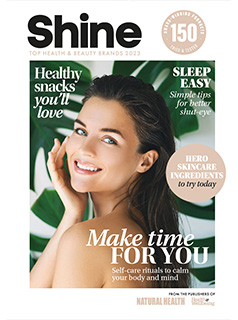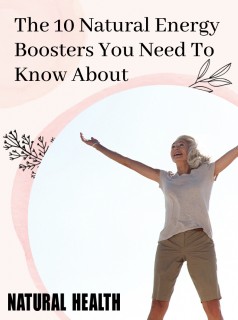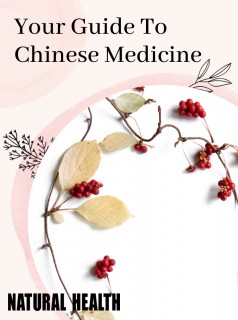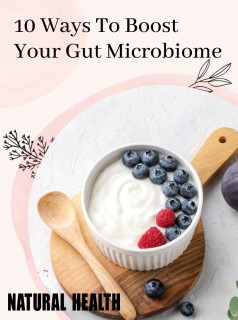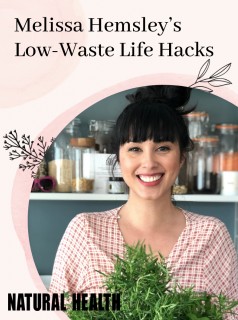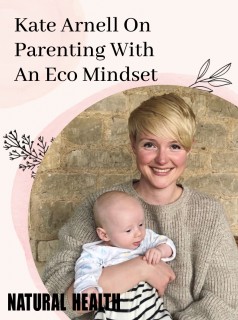Should you be eating foods that are free from gluten, dairy and other allergens?
Foods free from gluten, dairy and other allergens are becoming increasingly popular with women – a trend which looks set to continue. But could you be risking your health by choosing these products? Alex Gazzola reportsfavourite health food shop and you’ll find a selection of products such as breads, cakes, biscuits, desserts, savoury snacks, condiments, ‘milks’ and many others, prominently displaying their ‘free from’ credentials – be it gluten, wheat, dairy, lactose, eggs, soya or nuts.
Supermarkets, too, are now stocking an increasingly diverse range of such foods. According to a report by analysts Mintel, the market for ‘free from’ foods, valued at £106 million in 2006, is set to expand to an estimated £360 million by 2012. But is the increased popularity and availability of these specialist foods doing women any good, or are we putting our health at risk by consuming them – and needlessly avoiding wholesome foods?
There’s no doubt that these products are invaluable to many. Not long ago, if you had coeliac disease – a serious gut disorder caused by gluten in wheat – you would need to source specialist gluten-free (GF) flours and breads from pharmacists or by mail order. Now, hundreds of products are readily available. Meanwhile, those with lactose intolerance can benefit from lactose-free goods; and women with peanut allergies rely on guaranteed nut-free foods to avoid life-threatening reactions. But, increasingly, it is not only those with medical conditions who choose ‘free from’ foods. In one survey of 2,000 people, Mintel found that over a quarter of all shoppers bought these products – but interestingly twice as many bought them for ‘general healthy lifestyle’ reasons than because of a food allergy or intolerance.
The gluten and dairy myths
But are they wasting their time? “There’s a perception among many women that wheat and gluten are almost a ‘poison’ and dairy and lactose are bad for them,” says dietitian Kristian Bravin.
“It’s true that a lot of people cannot digest dairy – but most in the West can. It’s also true that wheat has been modified by cross-breeding, and that because it’s ‘new’ in this sense, a few people may not be able to tolerate it as well as other, raw and ancient ‘hunter-gatherer’ foods. But for the majority, they are just not a problem.”
Those with coeliac disease must strictly avoid all gluten grains. Milder wheat or gluten intolerances, especially those with IBS, may affect tens of thousands of others. Lactose intolerance affects up to 5 per cent to some degree. And then there are true food allergies – to nuts, fish and raw fruits and vegetables, for instance – which affect around 2-3 per cent of the population.
However, with all these possibilities, and indeed many others, getting yourself diagnosed can be problematic. Bravin says women are inaccurately selfdiagnosing perceived allergies and intolerances, perhaps using unreliable information from the internet, leading to ever more restricted, self-imposed diets. Many also use high-street or online-bought food intolerance tests, most of which have no or little supporting evidence behind them. Some can recommend you exclude many foods, and alter your diet radically, which should never be done.
Bravin is alarmed. “If women eliminate just one food, such as wheat, it’s usually not a problem – but if they don’t feel better they’ll often follow the recommendation of a friend and try another, and then another, until it becomes a health risk,” he says.
The message is to get properly tested – via a doctor and allergist – or a specialist dietitian who can try a carefully controlled elimination diet. If it turns out you do have a problem, wheat and dairy are usually the ‘big two’ culprits. It is perhaps no coincidence that these are the most heavily consumed foods in the West. Staples such as pasta, pizza, sandwiches, burgers, cereals, cakes and biscuits are likely to contain one, if not both.
Even if you’re not sensitive to either, moderating your intake may be worth trying. “It’s very easy to overeat these foods,” says New Nutrition Business’s Julian Mellentin, a nutritionist and global expert on functional food.
“Cereal for breakfast, a sandwich for lunch and pasta in the evening and you’ve eaten wheat three times in a day. Some people’s digestive systems react to carbohydrates in different ways – they may get bloated, gassy and windy, but it’s not necessarily a wheat intolerance. You could just be eating too much wheat, which isn’t good for anyone.”
Fine ‘free from’ alternatives
“Women are inaccurately self-diagnosing perceived allergies and intolerances using information from the internet”
Variety is the spice of life, then. Rotate your foods, and don’t rely on dairy, and especially wheat, too much, as most wheat is heavily processed and refined. Kristian Bravin says some women find spelt easier to digest, and there are dozens of other interesting grains on the market, such as rye and barley, as well as gluten-free alternatives such as amaranth, millet and rice as well as buckwheat and quinoa, which research suggests are much more nutritious than gluten grains. When choosing wheat and dairy, stick to wholesome products – natural yoghurts and wholewheat breads.
And of course – there are ‘free from’ foods if you need to eliminate or want to cut down a bit. It’s important to understand, though, that GF biscuits or cakes are not health foods, and that healthfulness should never be automatically inferred from a ‘free from’ label. Studies reveal that coeliac women on GF diets consume more sugars than women not on GF diets, possibly because they are more likely to ‘treat’ themselves more readily or over-compensate for the dietary restrictions that are imposed on them.
Certain everyday staple ‘free from’ foods are relied upon by many, of course. Michelle Berriedale-Johnson edits Foods Matter, the web’s fastest growing resource for allergies and food sensitivities. She has closely observed the industry’s growth over the last decade.
“It has been remarkable,” she says. “When we first started our product tastings we’d struggle to find 10 gluten or wheat-free breads – and most would be inedible. Now we have 40 or 50 entries, including baguettes, ciabattas, stone ground and multigrain.”
As for dairy-free alternatives, where once there was only beany tasting soya milk, now there are hugely improved soya milks, lactose reduced dairy milks, goat’s, sheep’s and buffalo’s milks, and of course oat, rice, potato, coconut and nut milks too.
“Rotate your foods and don’t rely on dairy or wheat too much as most wheat is heavily processed and refined”
This mushrooming diversity inspired Michelle to start up the FreeFrom Food Awards two years ago, in order to recognise the best manufacturers in the area. The winner of last year’s innovation award, Genius Bread, has gone on to take the coeliac world by storm, totting up impressive sales of £2.5 million by the end of 2009.
“Mainstream ‘free from’ food has graduated from ‘weird’ but free of the required ingredient, to not only acceptable but really quite tasty,” says Berriedale- Johnson. “Now these foods are attractively packaged and even nutritionally desirable.”
The key sensitivities
Coeliac disease
This affects 700,000 in the UK, but only about 100,000 are diagnosed. It is caused by the protein gluten, found in wheat, rye and barley, which triggers a damaging immune reaction in the gut of those affected. Symptoms vary, but may include diarrhoea, bloating, malnutrition, tiredness, skin complaints, mouth ulcers and others. Many may have mild or no symptoms. It can only be diagnosed through blood tests from your doctor, and then an endoscopy and biopsy. It is vital to continue to eat gluten prior to testing.
Lactose intolerance
This is an inability to properly digest lactose, the natural sugar found in milk, due to a deficiency of the enzyme lactase in the gut. It may affect up to 5 per cent of people to various degrees. Many people with partial lactose intolerance can eat modest amounts of yoghurts and some cheeses without problems. Tests are available from your doctor.
Food allergies
Potentially far more serious, these are immune system reactions to complex proteins found in many foods. Reactions to nuts and seafood are the main problems in adults, but reactions to raw fruit and vegetables are increasing, and these are often related to hay fever. Symptoms include skin rashes, tingling and irritation, on the lips, tongue and mouth, swelling and puffiness, facial flushing and runny nose, all the way through to the extreme wheezing, low blood pressure and dangerous reactions of anaphylaxis. If you suspect an allergy, it is vital you are tested at an allergy clinic and advised by a dietitian. Management is through avoidance, possibly with precautionary anti-histamine and adrenaline medication.
Other sensitivities
There are dozens of other possible types of reactions to foods, including soya, caffeine, additives, colourings and nightshades, with various mechanisms involved, and many are still being explored. The only reliable way to diagnose these is through an exclusion and reintroduction diet with the help of a specialist dietitian. Do not attempt this on your own, as results are difficult to interpret, and you need the advice and support of a professional. Avoid online or highstreet tests, as most experts consider them totally unreliable.






